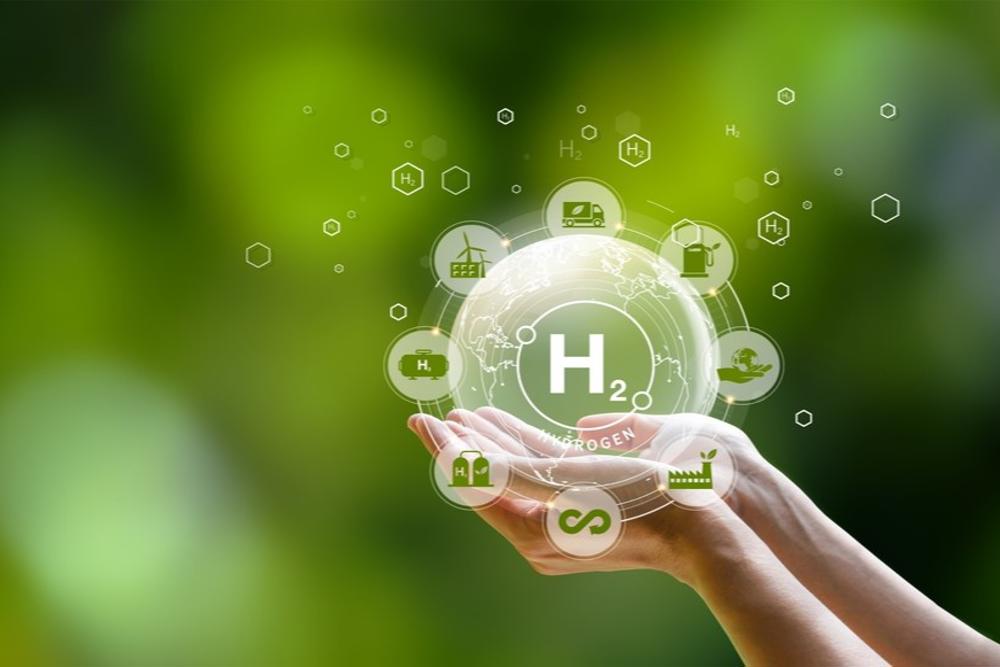
Shell, Mitsubishi Heavy Industries, Vattenfall and municipal company, Wärme Hamburg, are planning how they can jointly produce hydrogen from wind and solar power at the Hamburg-Moorburg power plant site and utilise it in its vicinity. To this end, the four companies have now signed a Letter of Intent.
In addition to the construction of a scalable electrolyser with an initial output of 100 megawatts, the companies are planning to further develop the site into a so-called ‘Green Energy Hub’. This includes exploring whether the existing infrastructure of the Moorburg location can be used for the production of energy from renewable sources. In this context, concepts for the necessary logistics chains and storage options for hydrogen will also be considered.
Subject to final investment decision and according to the current state of planning, once the site has been cleared, the production of green hydrogen is anticipated in the course of 2025 – making the electrolyser one of the largest plants in Europe.
The partners intend to apply for funding under the EU program, Important Projects of Common European Interest. This is forecast to occur in the first quarter of 2021 with the submission of a first outline of the project.
The four partner companies consider the location to have ideal conditions for further use. It is connected to both the national 380,000-volt transmission network and the 110,000-volt network of the City of Hamburg. In addition, overseas ships can call at the location directly and use the quay and port facilities as an import terminal. The municipal gas network company also intends to expand a hydrogen network in the port within 10 years and is already working on the necessary distribution infrastructure.
The companies note that numerous potential customers for green hydrogen are located near the site, thus enabling the project to cover the entire hydrogen value chain – from generation to storage, transport and utilisation in various sectors.
With these prerequisites, the Moorburg location is optimal for the German federal state of the Free and Hanseatic City of Hamburg and Northern Germany and can become a potential starting point for the development of a hydrogen economy.
For several years, Moorburg was the site of a gas-fired power plant operated by Hamburgische Electricitäts-Werke, and Vattenfall has been the operator of a coal-fired power plant there since 2015. Its commercial operation was terminated after the power plant won a bid in the auction for the nationwide coal phase-out in December 2020.
A decision by the transmission system operator on the system relevance of the plant is expected in March 2021. The City of Hamburg and Vattenfall are striving to clear [partial] areas of the site as soon as possible for the project to produce green hydrogen and the development of a Green Energy Hub.
In their efforts to form a consortium, the four companies can also count on the support of the City of Hamburg’s government. In their coalition agreement, the governing parties agreed to examine and support the feasibility of sector coupling and the establishment of hydrogen production in the city-state.
Jens Kerstan, Chairman of the Supervisory Boards of Wärme Hamburg GmbH and Gasnetz Hamburg GmbH as well as the Free and Hanseatic City of Hamburg’s Minister for the Environment and Energy, said the Moorburg site will produce green hydrogen on a large scale in collaboration with experienced partners from industry.
“This is a bold venture that now needs to be filled with life. This project will be a major lever for reaching our climate goals. The gas pipeline networks in the port and around Moorburg are now being expanded to accommodate hydrogen and to facilitate supplies to industry and large businesses. Our hydrogen future is now taking shape, and Hamburg intends to be at the forefront here. The Hamburg Senate supports these efforts, and Hamburg’s public companies play a decisive role in this.”
Michael Westhagemann, Minister for Economy and Innovation of the Free and Hanseatic City of Hamburg, said he always believed in the project at the Moorburg site, and there is no better location in Hamburg for a scalable electrolyser of this size.
“Via the 380 kV connection and the connection to Brunsbüttel, we have direct access to the supply of green electricity from wind power – and thus the possibility of actually producing green hydrogen in relevant quantities. With this announcement, a big step will be taken towards a long-term decarbonisation of the port and a competitive hydrogen economy in the metropolitan region of Hamburg and I congratulate the partners on this forward-looking project,” Mr Westhagemann commented.












